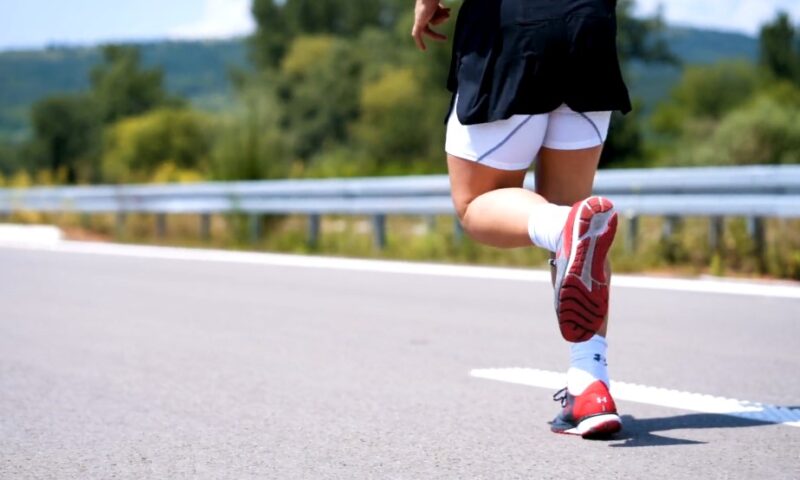Recovering from a running-related calf injury can feel like an uphill battle. You’ve been sidelined from the activity you love, and the path back to full strength might seem uncertain. The pain and frustration of an injury can be overwhelming, especially when it feels like your progress has come to a screeching halt.
But here’s the good news: with the right care, patience, and a structured approach, you can heal and return to running stronger and more prepared than ever. It’s all about taking the process step by step, being kind to yourself, and giving your body the time it needs to recover fully. Let’s explore how to make that happen.
Table of Contents
ToggleWhat Happens When Your Calf Gets Injured?

The calf is made up of two powerful muscles—the gastrocnemius and the soleus—that work together to help you push off the ground when running. A strain typically occurs when muscle fibers tear, especially where they connect to the Achilles tendon. This leads to swelling, tenderness, and restricted movement.
Here’s what you might experience:
| Symptom | What It Means |
| Swelling and heat | Inflammation is starting the healing process. |
| Sharp pain | Indicates the tear in the muscle fibers. |
| Limited mobility | Your body is protecting the injury. |
Inflammation can be uncomfortable, but it’s your body’s way of initiating repair. Supporting this process is key to a faster recovery.
The First Three Days: Protect and Rest

In the initial days after the injury, focus on reducing inflammation and avoiding further harm. Walking on the injured leg can worsen the strain, so rest is crucial. If you have crutches or a walking stick, use them to avoid putting weight on the leg.
To help minimize swelling and improve circulation:
- Keep the leg elevated: Rest it above heart level whenever possible.
- Apply ice: Use frozen peas or crushed ice wrapped in a towel for 20 minutes every two hours.
- Perform gentle movements: Point and flex your foot to prevent stiffness and improve blood flow.
While rest is necessary, complete immobility isn’t ideal. Gentle movements like flexing and pointing your foot keep the ankle mobile without stressing the calf.
If you’re unsure about your symptoms or need personalized guidance, pain management doctors or workers comp doctors can help assess your condition and advise the best course for recovery.
Days 3–14: Gradual Progression

Once the swelling and pain start to subside, it’s time to reintroduce light activity. Short walks can aid healing, but avoid overdoing it. Long distances or prolonged standing may strain the muscle further.
Tips for Gradual Progression:
- Start small: Take short walks, increasing distance as your comfort grows.
- Modify your footwear: Shoes with slightly higher heels can reduce strain on the calf.
- Keep movements controlled: Avoid jerky or sudden motions that could aggravate the injury.
Remember, it’s normal to feel some discomfort during this phase, but sharp pain means you need to back off. If you’re unsure about your symptoms or need personalized guidance, a pain management doctor can help assess your condition and advise the best course for recovery.
For additional resources on managing and recovering from injuries, check out veinmedicine.net. You’ll find expert guidance and support to complement your recovery journey.
Rebuilding Flexibility and Strength

Strength and flexibility are essential for a complete recovery. Begin with stretching exercises that improve the calf’s range of motion. One effective stretch involves standing with the injured leg forward and the foot flat on the floor. Lean forward gently, keeping the heel planted, until you feel a stretch in your calf. Hold for 15 seconds and repeat a few times.
For strength, try calf raises. Here’s how:
| Step | Details |
| Stand with support | Use a wall or chair for balance. |
| Rise onto your toes slowly | Engage both calves equally. |
| Lower back down with control | Avoid sudden drops to protect the muscle. |
| Progress to single-leg work | Shift weight to the injured leg gradually. |
Strengthening exercises like these rebuild the injured muscle and improve its resilience.
Week 2 and Beyond: Returning to Activity

By this stage, your injured leg should start to feel more stable. Continue to balance stretching and strengthening exercises while gradually increasing your activity level. Low-impact exercises like swimming or cycling are excellent for improving endurance without putting too much stress on the calf.
As you regain strength, focus on achieving symmetry between your injured and uninjured legs. When the tightness is barely noticeable, and the injured leg feels just as strong, you can begin running again.
Guidelines for Returning to Running:
- Start with short, slow runs to test your calf.
- Pay attention to any discomfort and adjust as needed.
- Gradually increase intensity and duration over time.
Rushing back too quickly can lead to re-injury, so patience is key.
Preventing Future Injuries
After you’ve recovered and are back to running, it’s essential to prioritize prevention to avoid future calf issues. While getting back to your routine can feel exciting, building habits that support long-term calf health is just as important as the recovery itself.
One of the best ways to protect your calves is to keep them strong and flexible. A proper warm-up before each run is crucial for preparing your muscles to handle the physical demands of running. Dynamic stretches, such as lunges or leg swings, can loosen up your muscles and improve blood flow, reducing the risk of strain. Including calf raises in your warm-up routine not only engages your calves but also helps maintain their strength over time.
In addition to warming up, stretching after every workout is equally vital. Focus on both deep and standard calf stretches, holding each stretch for at least 15–30 seconds. This helps your muscles recover from the strain of running and prevents tightness that could lead to injury.
Preventative care doesn’t stop there. Strengthening exercises, such as single-leg calf raises, resistance band stretches, or step-ups, can help balance the strength between both legs. Imbalances often lead to overcompensation, which can cause strain or injury in weaker areas. Consistent strength work will not only keep your calves in good shape but also improve your overall running efficiency.
Final Thoughts
Recovering from a calf injury takes time and care, but it’s a chance to learn how to better support your body. For most runners, full recovery takes a few weeks to a couple of months, depending on the severity of the strain. By staying patient, following these steps, and focusing on gradual progress, you’ll be back to chasing your goals soon enough. Every step of recovery is a step toward a stronger, more resilient you.
Related Posts:
- Top 400 Hilarious Gym Quotes to Keep You Motivated
- 25 Simple Running Motivation Tips To Get You Moving
- How Long Does It Take to Train for a Half Marathon?
- How Can You Start a Career as a Running Coach?
- How Far Is a Half Marathon? Everything You Need to Know
- Half Marathon Training Plan for Beginners - Simple…







